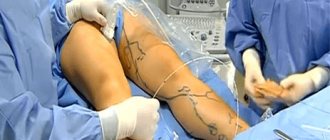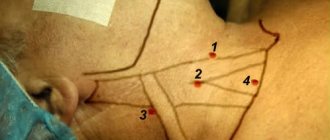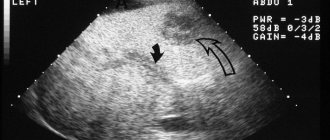Clinical Hospital No. 71 in Moscow – Surgery – Thrombectomy
Thrombectomy is a surgical procedure aimed at removing a blood clot from the blood vessels. The procedure occurs by cutting out the blood clot from the site of formation. In carrying out such an operation, 2 techniques are used: traditional and endovascular. Surgeons make an incision in the vessel at the site of the lesion and remove the blood clot with a special tool. As a result, normal blood circulation in the vessels is restored, and the general condition of the patient improves.
Thrombectomy techniques
To perform thrombectomy, professional equipment is used, as well as specialists who have undergone special training in this profile. Currently, the following thrombectomy techniques are used in practice:
- traditional,
- endovascular.
The decision to choose one or another method of surgical intervention is made by the doctor. This decision depends on the following factors:
- places where blood clots are located,
- causes of blood clots,
- on the condition of the blood vessels,
- age-related changes in the body.
Dangers of thrombophlebitis:
- fragments of the resulting thrombus can suddenly break off and, rushing upward through the bloodstream, reach and block the pulmonary artery, which leads to pulmonary embolism (PE) and instant death.
- When moving to the deep veins, the thrombus causes swelling and the subsequent rapid development of a trophic ulcer; in severe stages, amputation of the limb is possible.
At-risk groups
The main group of patients are patients with varicose veins: varicose veins provoke thrombophlebitis: the rate of blood circulation decreases due to the expansion and deformation of the affected veins, congestion is caused, and, as a result, blood clots and blood clots are formed.
If you have varicose veins, you must be regularly examined by a phlebologist, this is a matter of life. If varicose veins have been observed in your close relatives, it is advisable to check the health of the veins with a phlebologist.
Causes of thrombophlebitis of the great saphenous vein
- phlebeurysm;
- cardiovascular diseases;
- oncological diseases;
- inflammatory processes in the body of various types;
- injury to blood vessels in the legs;
- taking hormonal medications, including contraception;
- obesity and sedentary lifestyle;
- heavy loads, including when playing sports;
- pregnancy and postpartum period;
- forced immobility (eg, postoperative period);
- increased blood clotting caused by hereditary or acquired causes;
- air travel (long immobilization with frequent pressure changes);
- high temperature due to viral diseases.
Symptoms of thrombophlebitis of the lower extremities
Initially, painful sensations appear along the affected vein. The area of skin where the vessel lies becomes hot to the touch, acquires a bright red, scarlet tint, and the redness spreads widely in the form of swelling. The temperature rises first at the site of thrombophlebitis, then throughout the body and reaches from 37 to 38 C.
How is thrombophlebitis diagnosed?
When visiting a phlebologist, the primary diagnosis is duplex ultrasound. The width of the lumen of the venous wall, blood circulation, localization, extent and number of formed thrombotic clots are assessed;
A coagulogram is performed, general and biochemical blood tests are taken;
If pulmonary embolism is suspected, the patient is given a CT scan of the lungs or a chest x-ray.
How is thrombophlebitis of the great saphenous vein (GSV) treated?
If you notice symptoms of the disease, you should immediately rush to see a doctor: the treatment of this pathology is the responsibility of vascular surgeons-phlebologists. After identifying the localization of thrombophlebitis, treatment tactics may be different. With safe localization, outpatient treatment at home is acceptable; with progressive thrombophlebitis, which is ascending in nature and localized in dangerous areas of the leg, prompt hospitalization is required; surgery is performed to free the vein from the blood clot. Thus, treatment is divided into conservative and surgical.
With conservative treatment:
long-term wearing of compression garments and a large list of medications are prescribed, depending on the nature of the process and aimed at reducing inflammatory processes and localizing the blood clot with subsequent liquefaction. The following groups of drugs are used:
- anticoagulant;
- non-steroidal anti-inflammatory;
- phlebotonic;
- heparin;
- antibacterial.
During surgical treatment:
The most modern methods of completely getting rid of thrombophlebitis are used. These include various surgical options that completely remove blood clots, and can range from minimally invasive to major surgeries, such as:
- A crossectomy is performed: the great saphenous vein and its tributaries are cut off, thus stopping further growth of the thrombus. This method is used for acute thrombophlebitis with ascending thrombosis. As soon as it is diagnosed, the procedure is prepared and carried out urgently, within 2 days from the date of treatment.
- a permanent or temporary vena cava filter is implanted: a metal device shaped like a tulip is built into the lumen of the vein in a minimally invasive way. The purpose of this manipulation is to prevent further movement of blood clots into the pulmonary arteries. This filter is a blood clot trap without interfering with blood circulation.
We especially note that thrombophlebitis is an insidious pathology that tends to develop suddenly, with catastrophic consequences for the patient. Be sure to take measures to visit a phlebologist! This will save your life. In our Phlebology Clinic at the Russian Scientific Center for Surgery named after. Petrovsky, medical care to all Russian citizens, regardless of place of residence, is provided free of charge upon presentation of a compulsory medical insurance policy. You receive advice from the best phlebologists in one of the leading scientific medical institutions in the country. If there is an indication for surgery, it will also be performed free of charge (free of charge) according to a quota as high-tech medical care.
We care about your health!
Rehabilitation after surgery
After thrombectomy, the patient will be able to return to a full life only after a couple of days. Next, drug treatment is carried out. The attending physician prescribes the following medications to the patient:
- blood thinner tablets,
- drugs that restore veins, blood vessels,
- ointments that prevent the formation of clots,
- vitamin and mineral complexes.
To avoid the development of complications after surgery, you should follow the advice of your doctor:
- maintain an active lifestyle,
- wear elastic clothes,
- maintain proper nutrition,
- carry out physiotherapeutic procedures,
- Avoid visiting bathhouses and saunas for a while.
Crossectomy - what is this operation, when is it performed and how does it work?
Crossectomy is a method of treating varicose veins using surgical ligation and disconnection of the great saphenous vein. The surgical procedure is also called the Troyanov-Trendelenburg operation. Even in modern practice, there are situations when crossectomy is the only way to treat acute thrombophlebitis. Surgical crossectomy is more often used by doctors in public hospitals and much less often by specialists from private city phlebological centers.
Crossectomy - Troyanov Trendelenburg operation
Crossing the great saphenous vein is a radical technique. It makes it possible to eliminate reflux (reverse flow), which occurs through the safeno-femoral anastomosis. It also eliminates venous discharge in the area of the oval fossa and is pathological in nature. Nevertheless, the crossectomy technique is a necessary measure and is by no means leading in the practice of a good modern Moscow specialist. To remove varicose veins and eliminate venous reflux, today there are more advanced methods for treating varicose veins. Innovative European methods of thermoobliteration will cope much better with the removal of varicose veins, and it is they that are used by modern specialists in Moscow and the Moscow region.
Advantages and disadvantages of thrombectomy
The main disadvantage of thrombectomy is the development of complications after surgery. Among which are the following:
- infection of the surgical wound,
- reappearance of blood clots,
- bleeding.
Advantages of thrombectomy:
- the procedure takes approximately 15 minutes,
- proper blood supply to blood vessels is restored,
- pain disappears,
- low morbidity,
- fast recovery period.
Thrombectomy is just a quick way to eliminate pain and restore normal blood circulation in the vessels. Thrombectomy does not relieve the patient of the disease itself.
You can get detailed information about thrombectomy by calling +7 (495) 443-66-71 or write to us by e-mail
Medical indications for crossectomy
- Development of ascending thrombophlebitis at the level of the upper third of the thigh (in the basin of the great saphenous vein) or the upper third of the leg (in the basin of the small saphenous vein).
- Development of purulent thrombophlebitis.
The Troyanov-Trendelenburg operation is emergency and there are frequent cases of it being performed in cases of manifestations of ascending thrombophlebitis. Local anesthesia, spinal, epidural anesthesia, as well as general anesthesia can be used. Yes, today this is far from the best solution, but in some situations this approach will be justified. Here the opinions of modern Russian and European experts differ somewhat. Domestic specialists from government institutions, even in Moscow and the Moscow region, will most often perform a crossectomy operation if there is a risk of thrombosis transferring to the deep venous system. European surgeons and phlebologists will prefer conservative treatment with modern anticoagulants. After leveling the potential risks for the deep venous system, European experts recommend innovative endovascular techniques. A number of leading phlebologists in Moscow and the Moscow region are also inclined towards this medical approach.
Modern technique of surgical crossectomy
Modern crossectomy includes the following stages:
Crossectomy technique
- A skin incision in the groin above the projection of the vascular bundle.
- Visualization of the great saphenous vein and its confluence with the femoral vein.
- Elimination of all venous tributaries in the area of the oval fossa.
- Disconnection by ligation of the great saphenous vein at its junction with the femoral vein.
- Layer-by-layer suturing of the surgical wound.
This technique is quite standard, and similar surgery is still performed today in public surgical hospitals. Often, in addition to crossectomy, phlebectomy of the trunk vein and its tributaries is performed. It is worth noting that crossectomy today is very rarely performed in modern urban medical centers. In good phlebology clinics, innovative technologies are already used to treat varicose veins. And believe me, it is always better to entrust the treatment of varicose veins to a good professional who specializes in modern endovascular methods for treating varicose veins.
Sometimes crossectomy is combined with phlebectomy or with other methods of treating varicose veins. It is also advisable to carry out a crossectomy during the day, when all the necessary highly qualified personnel are present at the state medical center or clinic, since the operation can suddenly develop from a simple one into a complex one.
Observation by a phlebologist
Dressing and examination by a doctor are performed the next day after surgery. Subsequent scheduled consultations with a phlebologist - 3, 6 and 12 months after surgery - are needed to monitor the dynamics of recovery. If necessary, the patient of the Center is provided with free observation for six months.
Phlebectomy at the Central Clinical Hospital of the Russian Academy of Sciences
Phlebectomy for varicose veins helps restore impaired blood circulation, relieve the patient of unpleasant symptoms, and eliminate cosmetic defects. If you are looking for where to have this operation done in Moscow, contact the Central Clinical Hospital of the Russian Academy of Sciences. Our clinic has created all the conditions for the safe treatment of varicose veins at all stages of the disease. Qualified specialists with extensive practical experience use the latest techniques with proven effectiveness.
To make an appointment and clarify the cost of services, you can call or use a special form on the website.
Combined phlebectomy
This is the most effective method, which is successfully used in advanced stages of varicose veins of the lower extremities. In fact, during one surgical procedure, the doctor performs several minor operations using general or epidural anesthesia.
The combined intervention takes place in 3 stages:
- Crossectomy is the cutting off of the great saphenous vein from the venous system by ligating all tributaries. The intervention is performed through an incision in the groin or popliteal region.
- Stripping is the complete or partial removal of the affected vessel with a thin probe through punctures. There are various techniques for performing this operation: Babcock stripping, cryostripping, PIN stripping, etc.
- Miniphlebectomy – removal of small pathologically altered areas of blood vessels through punctures.
The operation can last from 1 to 5 hours. Its duration depends on the patient’s condition, stage of the disease, and anatomical features of the vascular system.
Treatment of patients suffering from thrombophlebitis
Phlebologists at the Yusupov Hospital provide complex therapy for patients with thrombophlebitis. Treatment includes conservative and surgical methods. With the help of conservative therapy, doctors achieve the following goals:
- Improving microcirculation and physical and chemical characteristics of blood;
- Inhibition of platelet adhesive ability;
- Correction of venous blood flow;
- Elimination of inflammation in the vein wall;
- Prevention of continued thrombus formation, fixation of the blood clot to the walls of the vessel;
- Impact on microcirculation and tissue metabolism.
In order to ensure functional rest of the limb and prevent thromboembolic complications, patients in the early period of the disease are prescribed bed rest with an elevated position of the lower limb. Anticoagulant therapy is carried out under strict laboratory monitoring of hemostasis system parameters. At the onset of the disease, phlebologists use direct anticoagulants (heparin or low molecular weight heparin - fraxiparin). 2 days before stopping heparin therapy, doctors prescribe indirect anticoagulants to patients with thrombophlebitis, and the daily dose of heparin is reduced by 1.5–2 times by reducing the single dose. To improve microcirculation, patients suffering from thrombophlebitis are given intravenous drips of pentoxifylline (trental).
Surgery for deep vein thrombosis of the leg
Deep vein thrombosis is an acute vascular pathology, which is characterized by the formation of a blood clot in the veins of the lower extremities, which are located below the deep fascia. A fresh thrombus in a deep vein of the leg can break away from the vessel wall or fragment and cause pulmonary embolism. If thrombolysis therapy is ineffective, phlebologists install a temporary filter in the inferior vena cava to prevent complications.
In most patients, a thrombus is formed and blood flow through the vein is partially restored. Sometimes chronic venous insufficiency and trophic ulcers develop. Linton's operation is performed when there are trophic changes in the soft tissues of the leg over a long period. Complications often develop after this intervention. Currently, phlebologists for trophic ulcers prefer the operation of subfascial endoscopic dissection of perforating veins.
In order to undergo a course of treatment for thrombophlebitis and perform an operation at a reasonable price, make an appointment with a phlebologist by calling the contact center phone number. Doctors at the Yusupov Hospital take an individual approach to choosing a treatment method for each patient.











